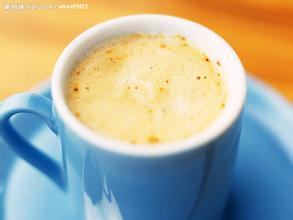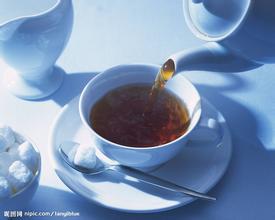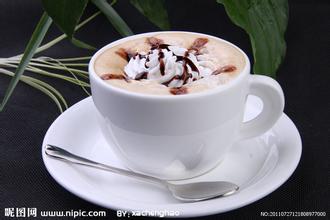Guatemalan Coffee Flavor Taste Manor area introduces the characteristics of Guatemalan Coffee Inchte Manor
Antigua is also a famous coffee producer. Antigua coffee is produced at Hacienda Carmona, where the best quality coffee is EL Pulcal, which is not only of good quality, but also richer in flavor, taste and tobacco flavor than other coffees in Guatemala. Every 30 years or so, the area around Antigua is hit by a volcanic eruption, which provides more nitrogen to the already fertile land, and sufficient rainfall and sunshine make the area more suitable for growing coffee. Other coffee producing areas include San Marco, Oriente & Coban, Palcya, Mataquescuintia and La Uman in Zacapa. The establishment of the Specialty Coffee Association means that the Guatemala government is beginning to pay attention to high-quality coffee, and the efforts to do so will soon pay off. They also benefit from a US-funded program, known locally as "The Project," which plans to invest $2.5 million to encourage the establishment of small high-quality coffee plantations. The main regions of Guatemala that produce high-quality coffee are Lake Atitlan and Huehuentenango. The aim of the project is to help break the vicious cycle of high production and low quality that has plagued the world coffee industry. Bourbon trees, for example, grow taller and produce fewer beans than the new dwarf trees, and although they are both Arabica varieties, Bourbon trees produce better beans and are more popular with foodies. The project also hopes to encourage local producers to process their own coffee beans, since most of the coffee is now sold to middlemen. If coffee processing can be carried out in local factories, the value and even quality of coffee may be improved. However, coffee production in Guatemala has now declined relatively, at only 700 kilograms per hectare, compared with 900 kilograms per hectare in El Salvador and a staggering 1700 kilograms per hectare in Costa Rica. Guatemala's coffee export trade is controlled by private companies, but the National Coffee Council (Asociación Nacional de Cafe) controls the rest of the coffee industry. Some of Guatemala's finest coffee is exported to Japan, where it sells for $3 to $4 a cup. Most of the small-scale producers are descendants of Mayans who prefer to be called locals. Father Jesuit introduced coffee trees to Guatemala in 1750, and German settlers developed the coffee industry in the late 19th century. Today, most of the coffee industry is produced in the south of the country. Here, the slopes of the Sierra Madre volcano provide ideal conditions for growing fine coffee beans, which grow at high altitudes. Critics prefer this blend of flavoured coffee with a spicy flavour to other types of coffee. The extra-hard coffee beans here are rare good coffee, it is full of particles, delicious, balanced acidity. Guatemala has also received attention for its giant coffee beans. The coffee industry, which once prospered the country, still dominates the national economy. Unfortunately, however, the political situation at home is not conducive to coffee growers. High output is usually a sign of a country's overall economic prosperity

Important Notice :
前街咖啡 FrontStreet Coffee has moved to new addredd:
FrontStreet Coffee Address: 315,Donghua East Road,GuangZhou
Tel:020 38364473
- Prev

Medium roasted Bolivian coffee flavor manor introduce snow vein manor
Lake Titicaca, located on the Coaya Plateau on the border between Bolivia and Peru, is the highest and largest freshwater lake in South America, one of the highest large freshwater lakes in the world, the highest navigable lake in the world, and the third largest lake in South America (after Maracaibo and Patus lagoons) Lake Titicaca Copacabana countries.
- Next

Kenyan Coffee with Fruit Flavor introduction to Berman Manor
Aromatic, full-bodied, with fruit flavor, taste rich and perfect. Kenyan coffee has a wonderful fruit flavor, with a BlackBerry and grapefruit flavor, is the love of many coffee gluttons. This coffee has an excellent medium purity, crisp and refreshing taste. It has a fresh flavor and is suitable for drinking iced coffee in summer. When tasting this coffee, if it is served with grapefruit
Related
- Does Rose Summer choose Blue, Green or Red? Detailed explanation of Rose Summer Coffee plots and Classification in Panamanian Jade Manor
- What is the difference between the origin, producing area, processing plant, cooperative and manor of coffee beans?
- How fine does the espresso powder fit? how to grind the espresso?
- Sca coffee roasting degree color card coffee roasting degree 8 roasting color values what do you mean?
- The practice of lattes: how to make lattes at home
- Introduction to Indonesian Fine Coffee beans-- Java Coffee producing area of Indonesian Arabica Coffee
- How much will the flavor of light and medium roasted rose summer be expressed? What baking level is rose summer suitable for?
- Introduction to the characteristics of washing, sun-drying or wet-planing coffee commonly used in Mantenin, Indonesia
- Price characteristics of Arabica Coffee Bean Starbucks introduction to Manning Coffee Bean Taste producing area Variety Manor
- What is the authentic Yega flavor? What are the flavor characteristics of the really excellent Yejasuffi coffee beans?

